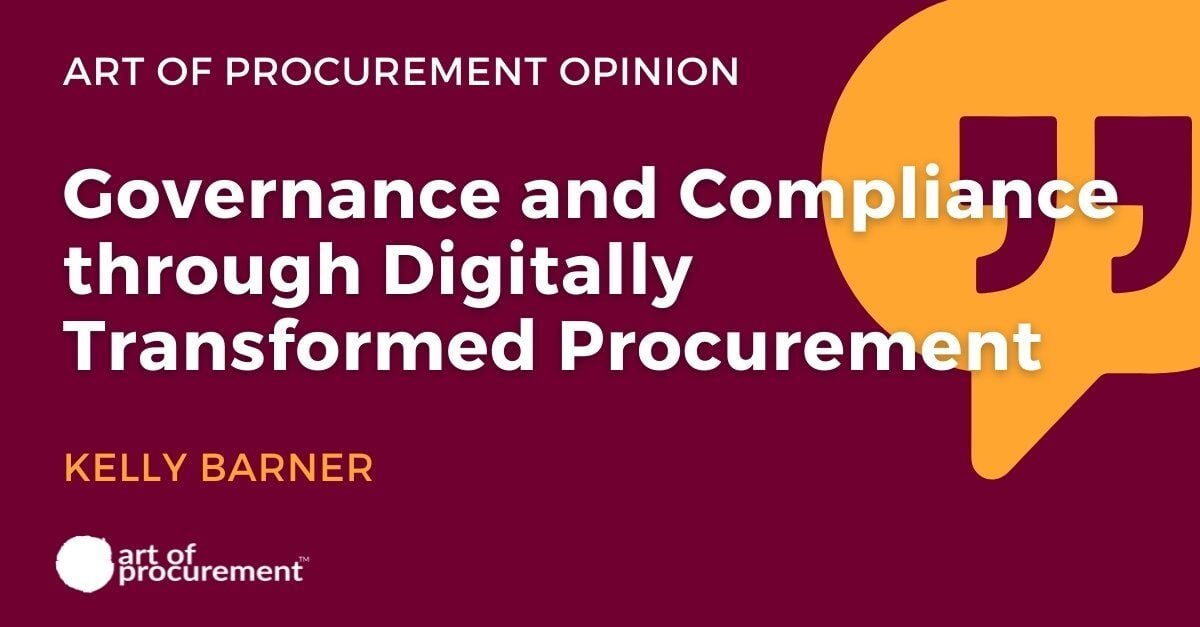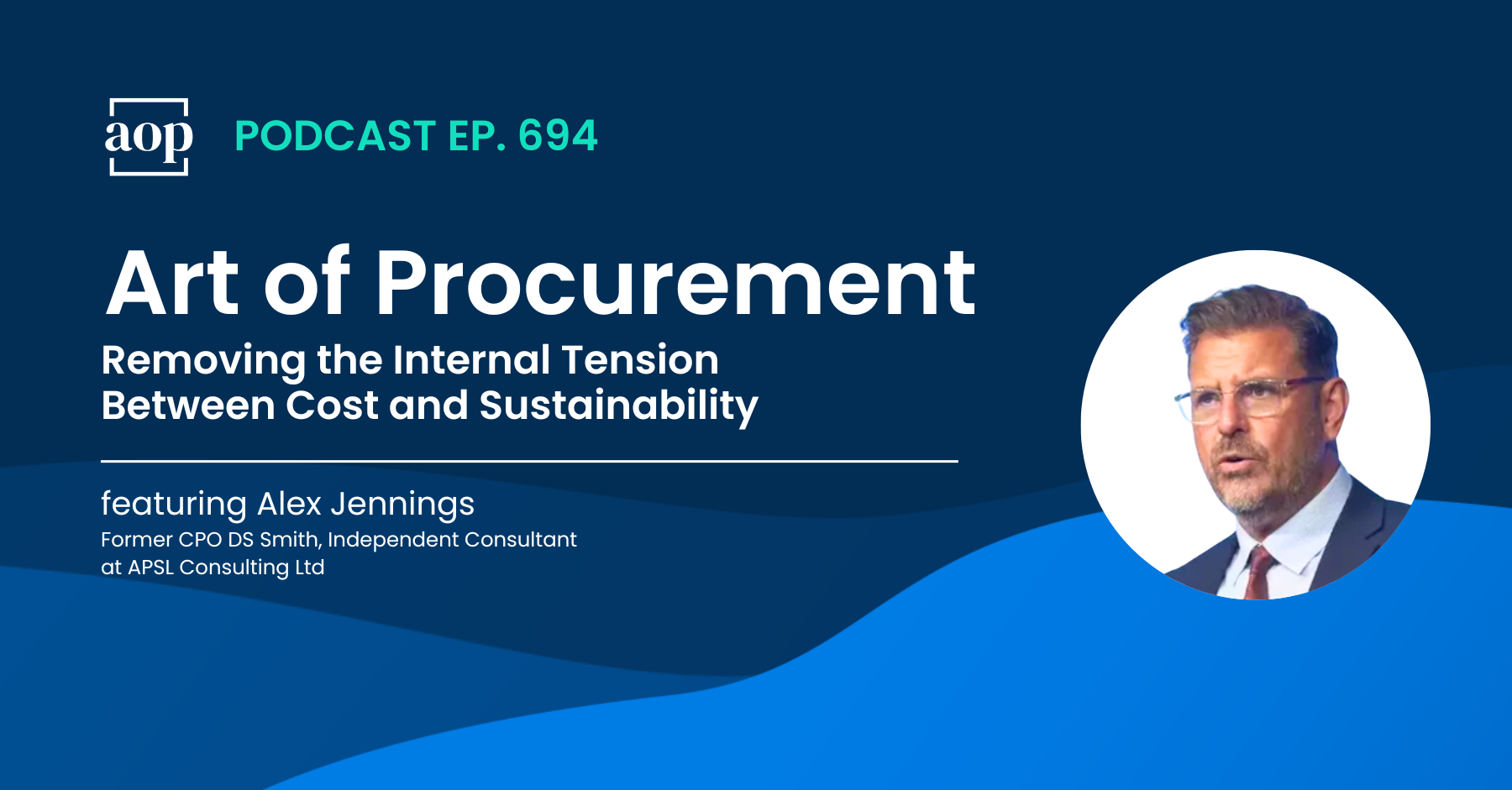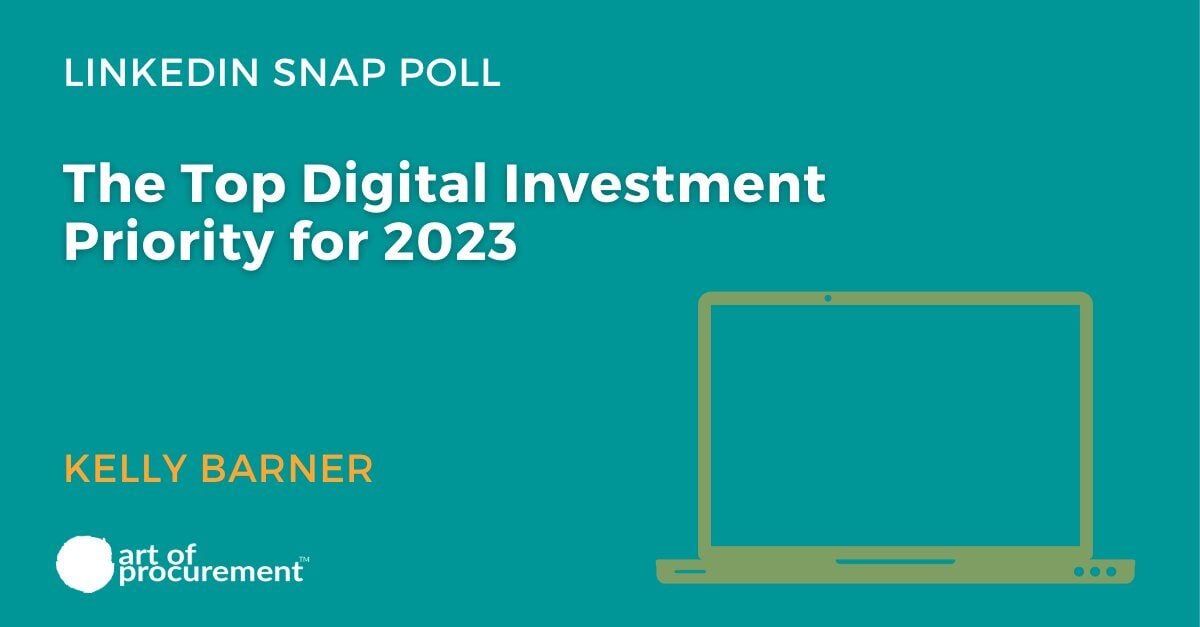3 min read
Governance and Compliance Through Digitally Transformed Procurement
Kelly Barner : March 3, 2021

Governance and compliance have always presented a challenge for procurement – not because we can’t establish and enforce them, but because doing so has a way of losing us all of our friends – or worse, making enemies.
On the one hand, most governance-related activities are focused on protecting the company against risk and savings leakage. They are in the best interests of the enterprise, even if they represent an inconvenience on an individual level. On the other hand, people are people. No one likes to be scolded, called out, or corrected – even when they are actually doing the wrong thing.
Could digital transformation provide the solution to procurement’s governance enforcement problems? Maybe – but only if we consider that a secondary objective from the outset.
There are definitely situations examples of people buying the wrong things, in the wrong way, from the wrong supplier on purpose. But, honestly, that is the minority of non-compliant spend. Most of the time non-compliance is the result of confusion, misinformation, or people just doing what they think they have to do to get their job done. If we give others the benefit of the doubt, we have to admit that compliance issues actually begin with the foundation of formal procurement as much as they are supposed to be resolved by it.
What is non-compliance? I think about this as similar to something I notice when I do one of my least favorite chores: weeding. Sometimes a weed is really pretty. It may have nice leaves or colorful flowers. I know absolutely nothing about plants, and sometimes I think to myself, ‘who is to say this is a weed?’ Maybe it is a rare plant that I didn’t happen to put in this spot.
Non-compliant spend is very much the same. It is non-compliant because we say it is non-compliant according to the rules we have put in place. Change those rules and the spend is no longer non-compliant. If we can strategically expand the circle rather than tightening the rules, we have the opportunity to bring more people into the fold without losing control or increasing risk.
Back to digital transformation…
Digital transformation is about bringing all processes and data together into one integrated platform. If we are able to do that, there is no question about where people should go or who they should call to get a product or service. It doesn’t matter what the category of spend is or how large the purchase is. You go to the one place and start your purchase or request process. Ideally, the transformation effort also involves some investment in user experience – both interface and convenience.
If we have broad transformation objectives that include repositioning procurement above and beyond the technology, we can reduce the need for so much active investment in compliance. Additional functionality can be brought in as long as this is a priority for the transformation.
Self-guided sourcing is certainly one way of broadening our view of compliance. If people are empowered to select their own suppliers from a pre-vetted list of companies without having to wait for procurement, at least we have insight into their process and activities. Those might be purchases that otherwise would go on a p-card or an expense report.
Another approach is to integrate tail spend management technology. If we are worried about non-compliant spend being a bunch of murky transactions that defy management, a regular way of handling tail spend – preferably an automated way – can make that concern go away with little to no additional human investment.
Of course, root cause analysis is always the best way to understand the drivers of non-compliant spend in your organization. Investigating those drivers can provide invaluable insight into opportunities to improve procurement through both technology and process. Procurement needs to understand the people, business units, and categories of spend that are the primary sources of non-compliance. One-offs are always going to exist, but where are there patterns we should address? Do we have relationships with those teams, people, and suppliers? If not, why?
Procurement cannot meaningfully transform or evolve without reconsidering how we define, manage, and maximize compliance through healthy governance and an improved user experience. Part of what we need to keep in mind is that authority over spend is not ours to distribute. Making the mistake of thinking it is has gotten us into trouble in the past. Let’s focus instead on the pragmatic part, allowing technology to shrink the job of managing governance and compliance.




